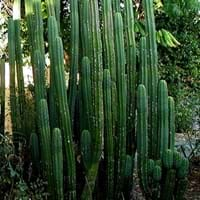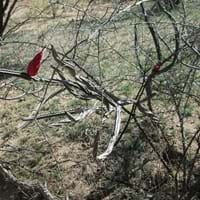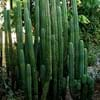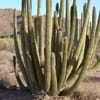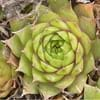Life Span
Perennial
Perennial
Type
Cactus
Flowering Plants
Origin
North America, Latin America and the Caribbean, Central America, South America
Mexico, Caribbean, Central America
Types
Not Available
not available
Habitat
low mountains
Desert
USDA Hardiness Zone
8-10
12-15
AHS Heat Zone
Not Available
12-10
Sunset Zone
Not Available
H2
Habit
Not Available
Weeping
Minimum Height
Not Available
Minimum Width
Not Available
Flower Color
White
White, Ivory
Flower Color Modifier
Not Available
Not Available
Fruit Color
Not Available
Non Fruiting Plant
Leaf Color in Spring
Not Available
Green, Dark Green
Leaf Color in Summer
Not Available
Green, Dark Green
Leaf Color in Fall
Not Available
Green, Dark Green
Leaf Color in Winter
Not Available
Olive, Dark Green
Leaf Shape
Succulent
Long and slender with very sharp edges
Plant Season
Not Available
Summer
Sunlight
Full Sun
Partial shade
Growth Rate
Not Available
Fast
Type of Soil
Loam, Sand
Sand
The pH of Soil
Acidic, Neutral, Alkaline
Neutral, Alkaline
Soil Drainage
Well drained
Well drained
Bloom Time
Not Available
Early Summer, Summer
Tolerances
Drought
Drought
Where to Plant?
Container, Ground
Container, Ground
How to Plant?
Seedlings
Grafting, Seedlings, Transplanting
Plant Maintenance
Medium
Medium
Watering Requirements
Needs very little water
Does not require lot of watering, Water once every two or three weeks, Water when soil is dry
In Summer
Lots of watering
Lots of watering
In Spring
Moderate
Moderate
In Winter
Average Water
Average Water
Soil pH
Acidic, Neutral, Alkaline
Neutral, Alkaline
Soil Type
Loam, Sand
Sand
Soil Drainage Capacity
Well drained
Well drained
Sun Exposure
Full Sun
Partial shade
Pruning
Remove damaged leaves, Remove dead branches, Remove dead leaves
Remove damaged leaves, Remove dead branches, Remove dead leaves
Fertilizers
All-Purpose Liquid Fertilizer
All-Purpose Liquid Fertilizer
Pests and Diseases
Bacterial soft rot, bees, Fungal Diseases, Mealy bugs, Scale, Spider mites
Aphids, Mealybugs, Root rot, Scale, Viruses
Plant Tolerance
Drought
Drought
Flower Petal Number
Not Available
Semi-Double
Showy Fruit
Not Available
Yes
Edible Fruit
Not Available
No
Foliage Texture
Bold
Bold
Foliage Sheen
Not Available
Not Available
Attracts
Insects
Not Available
Allergy
Not Available
Not Available
Aesthetic Uses
Beautification, Showy Purposes
Beautification
Beauty Benefits
Removes dandruff, Skin inflammation, Skin Problems
Not Available
Environmental Uses
Air purification
Air purification
Medicinal Uses
antimicrobial, Cardiac, High blood pressure, Wounds
Diabetes, Hangover
Part of Plant Used
Flowers, Stem
Flowers, Fruits, Leaves
Other Uses
Traditional medicine, Used as Ornamental plant
Employed in herbal medicine, Fine spines and trichomes are used as fiber for weaving, Used As Food
Used As Indoor Plant
No
No
Used As Outdoor Plant
Yes
Yes
Garden Design
Container, Houseplant, Rock Garden, Wall
Container, Hanging Basket, Houseplant, Tropical
Botanical Name
Trichocereus pachanoi
Peniocereus greggii
Common Name
Trichocereus
Night Blooming Cereus, Reina de la noche, Arizona queen of the night
In Hindi
Trichocereus
Night Blooming Cereus
In German
Trichocereus
Nachtblühende Cereus
In French
Trichocereus
Night Blooming Cereus
In Spanish
Trichocereus
Reina de la noche
In Greek
Trichocereus
Night Blooming Cereus
In Portuguese
Trichocereus
Night Blooming Cereus
In Polish
Trichocereus
Noc Blooming Cereus
In Latin
Trichocereus
Maria Maria Cereus
Phylum
Magnoliophyta
Magnoliophyta
Class
Magnoliopsida
Magnoliopsida
Order
Caryophyllales
Caryophyllales
Family
Cactaceae
Cactaceae
Genus
Echinopsis
Peniocereus
Clade
Angiosperms, Core eudicots, Eudicots
Angiosperms, Core eudicots, Eudicots
Tribe
Trichocereeae
Pachycereeae
Subfamily
Cactoideae
Cactoideae
Difference Between Trichocereus and Night Blooming Cereus
If you are confused whether Trichocereus or Night Blooming Cereus are same, here are some features about those plants to help you choose better. Many people think that these two plants have the same characteristics, but one can see Trichocereus and Night Blooming Cereus Information and learn more about it. Fertilizers required for proper growth of Trichocereus are All-Purpose Liquid Fertilizer, whereas for Night Blooming Cereus fertilizers required are All-Purpose Liquid Fertilizer. Hence, one should know the basic difference between Trichocereus and Night Blooming Cereus if you are planning to have them in your garden to enhance its beauty.
<
Flowering PlantsImportance of Trichocereus and Night Blooming Cereus
Want to have the most appropriate plant for your garden? You might want to know the importance of Trichocereus and Night Blooming Cereus. Basically, these two plants vary in many aspects. Compare Trichocereus and Night Blooming Cereus as they differ in many characteristics such as their life, care, benefits, facts, etc. Every gardener must at least have the slightest clue about the plants he wants to plant in his garden. Compare their benefits, which differ in many ways like facts and uses. The medicinal use of Trichocereus is antimicrobial, Cardiac, High blood pressure and Wounds whereas of Night Blooming Cereus is Diabetes and Hangover. Trichocereus has beauty benefits as follows: Removes dandruff, Skin inflammation and Skin Problems while Night Blooming Cereus has beauty benefits as follows: Removes dandruff, Skin inflammation and Skin Problems.
Compare Facts of Trichocereus vs Night Blooming Cereus
How to choose the best garden plant for your garden depending upon its facts? Here garden plant comparison will help you to solve this query. Compare the facts of Trichocereus vs Night Blooming Cereus and know which one to choose. As garden plants have benefits and other uses, allergy is also a major drawback of plants for some people. Allergic reactions of Trichocereus are Not Available whereas of Night Blooming Cereus have Not Available respectively. Having a fruit bearing plant in your garden can be a plus point of your garden. Trichocereus has no showy fruits and Night Blooming Cereus has showy fruits. Also Trichocereus is not flowering and Night Blooming Cereus is not flowering . You can compare Trichocereus and Night Blooming Cereus facts and facts of other plants too.
